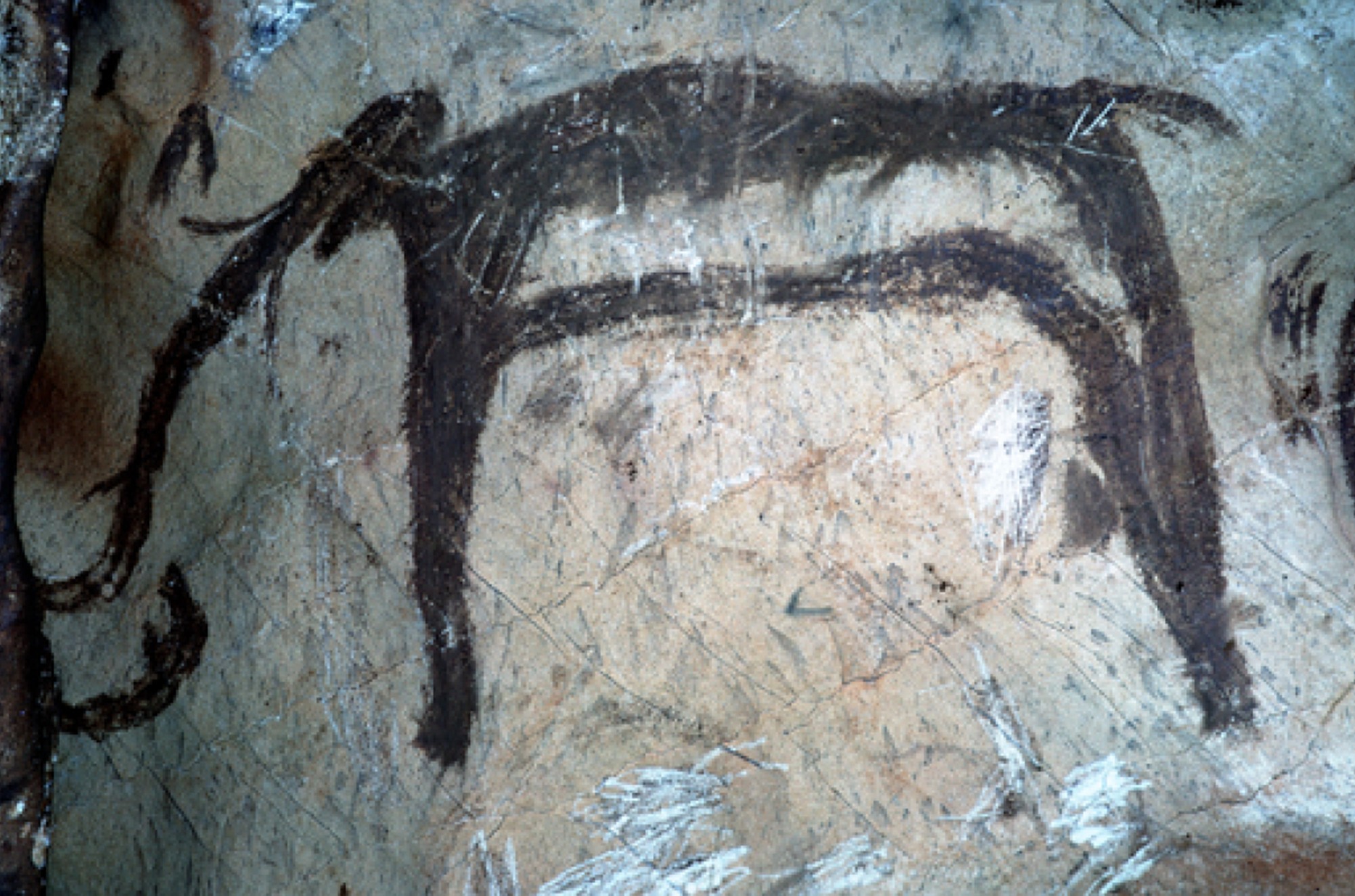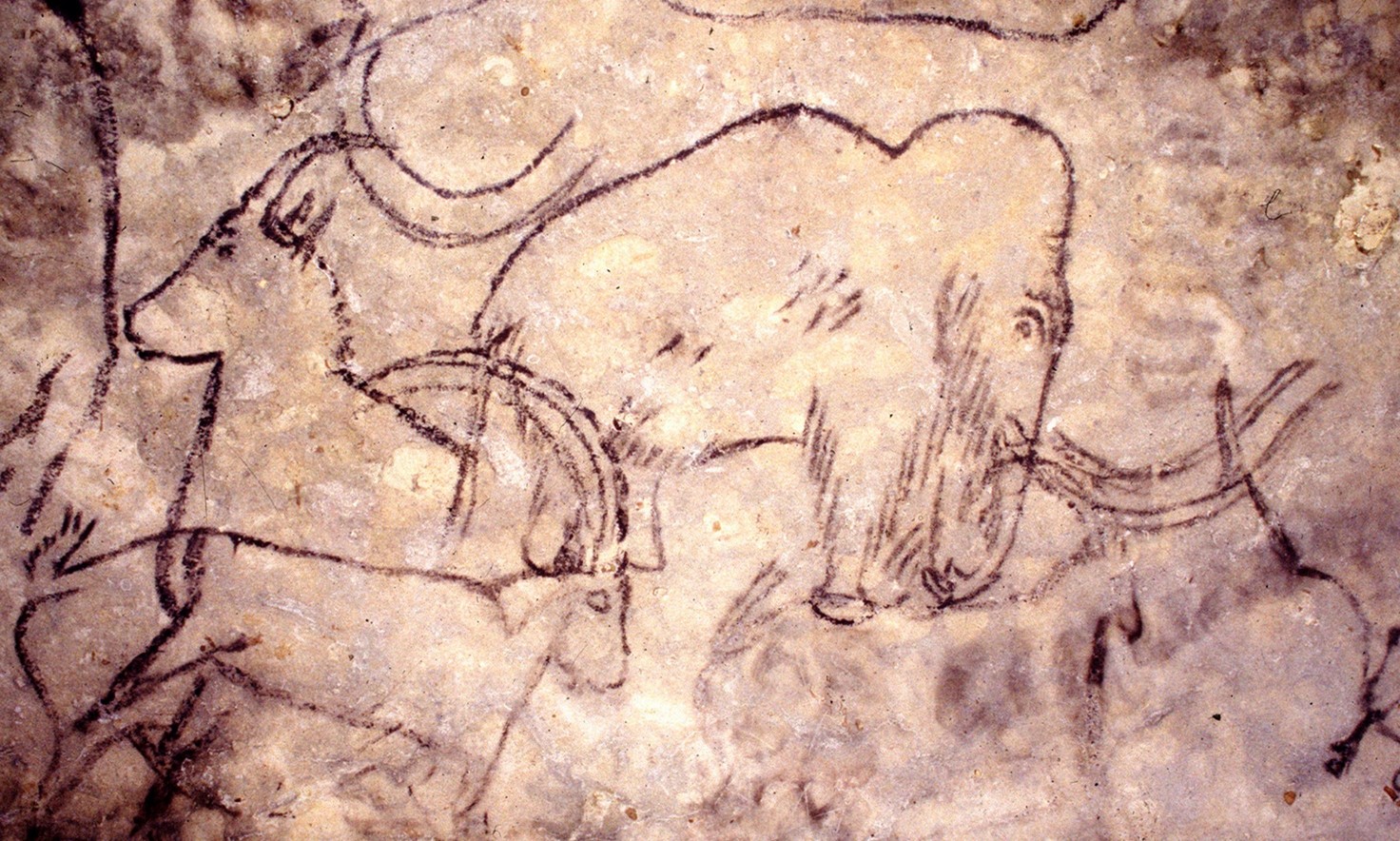Ancient cave art combines geology, biology and archaeology. When talking about mammoths with Dr Floriane Recht during her visit at Vilnius University, an idea came up to invite her to the Nature Research Centre to make a presentation and share her research on cave paintings. Unfortunately, Floriane Recht had to return to France, so she could not come to the centre, but she prepared a special illustrated poster about her research (attached).
Floriane Recht studied prehistory and cave art at the University of Toulouse and wrote her PhD thesis on the geometric signs of the Niaux cave (see Figure 9 of the poster).
As we can see in the poster, some 500 drawings and carvings from Palaeolithic caves were analysed, and of all the animals depicted, about 10% were mammoths. The drawings were found in 47 sites, mostly in France, with only 5 mammoth drawings in Russia and 6 in Spain. The mammoth drawings are divided into two groups according to age: the old ones from about 40,000-20,000 BP and the new ones from about 20,000-16,000 BP.
The poster mentioned that the ancient painters also needed geological knowledge – how to find manganese oxide, hematite, limonite and other minerals to be used for drawing.
It is interesting to note that the age of the oldest mammoth that lived in Lithuania before the last glaciation is 52,000 years, and the age of the youngest mammoth is about 25,000 years, which corresponds to the age of the Paleolithic cave paintings, according to the data of Floriane Recht. The Vilnius mammoth appears to be the youngest, having lived in the postglacial period 13,800 years ago. Due to geological conditions, there are no caves in Lithuania (except for a few karst caves filled with water and unsuitable for human habitation), so there are no Lithuanian mammoth drawings.

Mammoth image, Baume-Latrone Cave (Gard, France)

Images of a mammoth and other animals, Rouffignac Cave (Dordogne, Périgord, France)
Link to the scientific article:
Satkūnas, J., Girininkas, A., Rimkus, T., Daugnora, L., Grigienė, A., Stančikaitė, M., Slah, G., Skuratovič, Ž., Uogintas, D., Žulkus, V., 2023. New 14C data of megafaunal remains from Lithuania – implications for the palaeoenvironmental interpretation of the Middle Weichselian. Geological Quarterly, 2023, 67: 3, doi: 10.7306/gq.1671. IF 1.576 / Q2 ECOLOGY.
Jonas Satkūnas, Laboratory of Climate and Water Research



